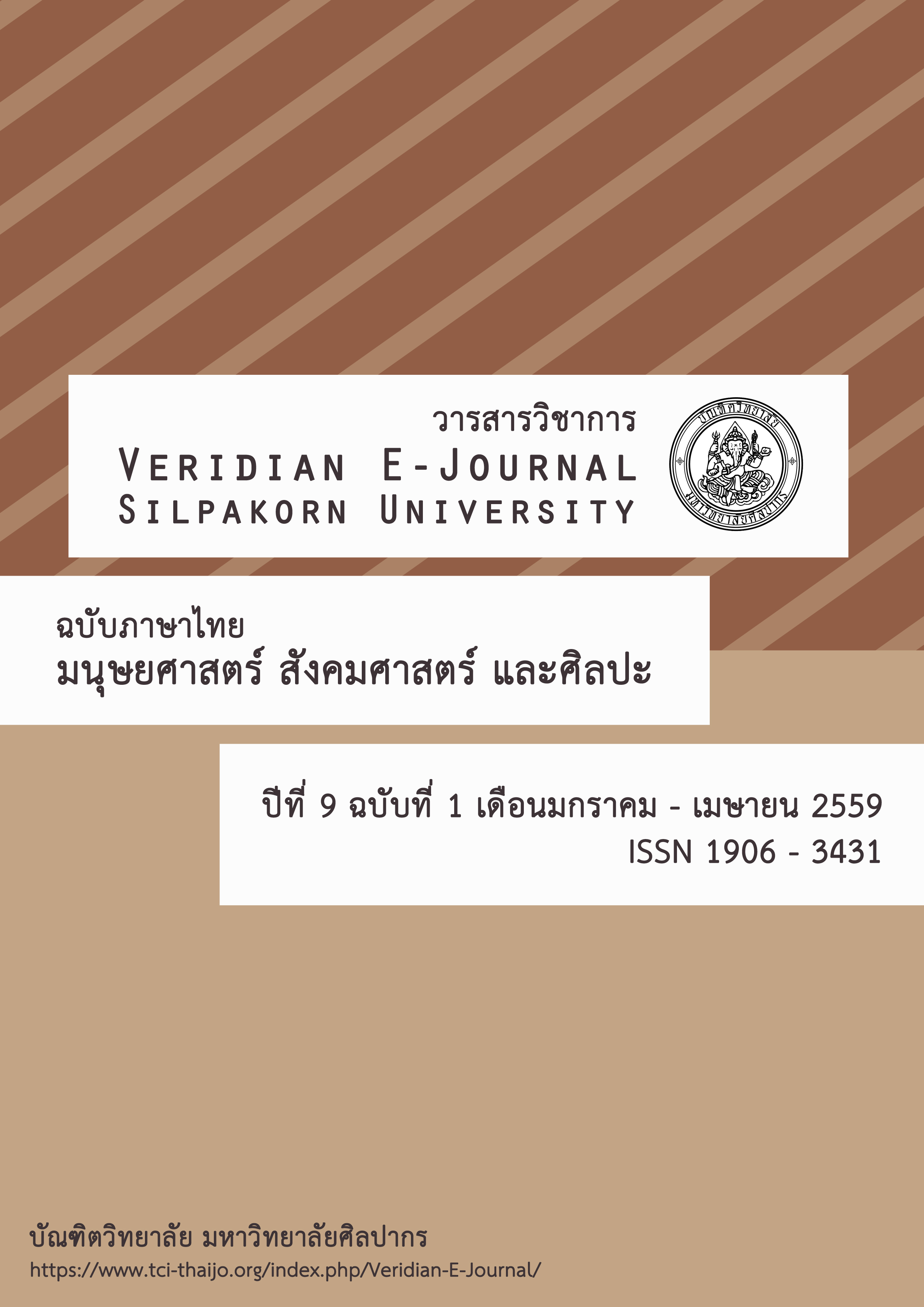ไวโอลินโซนาตาของโมสาร์ท : ดนตรีสร้างสรรค์ผ่านกาลเวลา
Main Article Content
Abstract
บทคัดย่อ
วอล์ฟกัง อมาเดอุส โมสาร์ท ได้รับการฝึกฝนตั้งแต่เยาว์วัย ให้เชี่ยวชาญทั้งเครื่องดนตรีเปียโนและไวโอลิน งานประพันธ์โซนาตาสำหรับเปียโนและไวโอลินของโมสาร์ท เป็นเครื่องยืนยันถึงความเข้าใจอันลึกซึ้ง ของเขา ในเรื่องของการประสานสัมพันธ์ระหว่างเครื่องดนตรีทั้งสอง แม้ว่าโมสาร์ทเองจะมิได้เน้นบทบาทของ การ เป็นนักไวโอลินในช่วงหลังของชีวิต แต่ความสนใจที่มีต่องานประเภทนี้ก็ดำเนินต่อเนื่องไปจนถึงช่วงท้ายของชีวิตของเขา
จากการที่ได้ศึกษาตัวบทของโซนาตาฉบับดั้งเดิม (Urtext) ประกอบกับการแสวงหาข้อมูลอื่นๆ จากตำราคู่มือการบรรเลงดนตรีของนักวิชาการดนตรีร่วมสมัย สัญลักษณ์การประดับทางดนตรีต่างๆ ในแบบแผนของศตวรรษที่ 18 อัตชีวประวัติของโมสาร์ท และพัฒนาการความเปลี่ยนแปลงของเครื่องดนตรี ผู้วิจัยสามารถสรุปได้ว่า
1. โมสาร์ทเป็นผู้ที่มีบทบาทสำคัญยิ่งในประวัติศาสตร์การดนตรีตะวันตก ในฐานะผู้สร้างดุริยางคนิพนธ์ที่บ่งบอกถึงศักยภาพอันแท้จริงของเครื่องดนตรีไวโอลิน นั่นคือ เป็นผู้ปรับให้ไวโอลินมีความโดดเด่นไม่ด้อยกว่าเปียโนในโซนาตาประเภทนี้
2. การที่ได้ศึกษาโซนาตาประเภทนี้ของโมสาร์ทตามลำดับและโดยองค์รวม ผู้วิจัยพบว่าการแสดงออกด้วยไวโอลินเป็นตัวบ่งชี้ให้เห็นถึงพัฒนาการไปสู่วุฒิภาวะในทางดนตรีของโมสาร์ทได้เป็นอย่างดี
การวิจัยในด้านดนตรีวิทยาส่งผลให้ผู้วิจัยและนักเปียโนผู้ร่วมงาน สามารถกำหนดทิศทางในการบรรเลงได้อย่างชัดเจน ซึ่งผลของการแสดงสดและการบันทึกเสียง ยืนยันได้ถึงการยอมรับของกลุ่มผู้ฟังในยุคปัจจุบัน
คำสำคัญ : วอล์ฟกัง อมาเดอุส โมสาร์ท, โซนาตาสำหรับไวโอลิน และเปียโน, การตีความเพื่อการบรรเลง
Abstract
Wolfgang Amadeus Mozart was thoroughly trained since his childhood both as a pianist and violinist. His sonatas for piano and violin can testify to his deep understanding of the mutual enrichment of both instruments. Although Mozart did not concentrate on his role as a practicing violinist throughout his life, his interest in this particular form of composition continued unabated until the end of his life.
On the basis of the study of the "Urtext" of the sonatas as well as that of the contemporary manuals for the violin, conventions of ornamentation in the 18th century, biographical data as well as evolution of various musical instruments, the researcher has reached the following conclusions.
1. Mozart occupies a significant role in the history of western music as a composer who knows how to exploit the true potential of the violin and consequently enables the violin to be on a par with the piano.
2. The study of the sonatas for piano and violin individually and in their entirely can serve as an indicator of Mozart's own process of musical maturation.
It can be said that musicological research has given the researcher and his pianist partner a distinct direction in their performance, as may be witnessed from the receptive reaction by the public both through the live performances and recording.
Keyword : Wolfgang Amadeus Mozart, Sonatas for Violin and Piano, Interpretation for Performance
